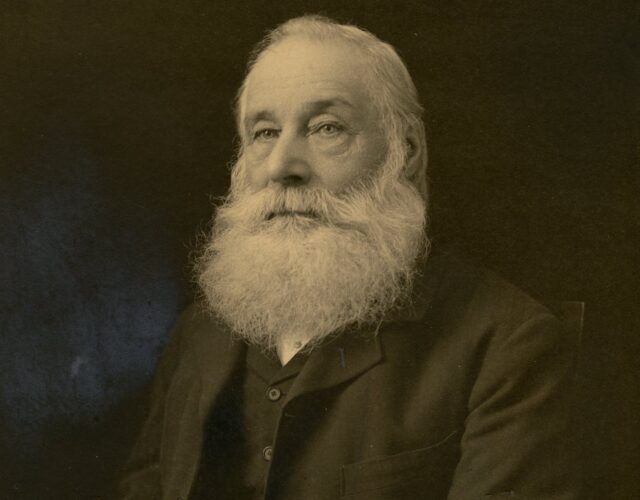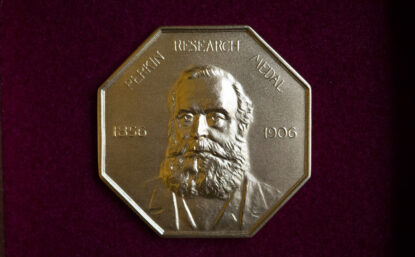William Henry Perkin
In 1856 Perkin accidentally discovered mauvine—the first commercialized synthetic dye—and introduced a new era in the chemical industry.

While attempting to produce quinine, William Henry Perkin serendipitously synthesized mauve, the first commercialized synthetic dye. Perkin’s discovery formed the basis for a new chemical industry and eventually for the pharmaceutical industry as well.

A Happy Accident: Mauve
In 1856, during Easter vacation from London’s Royal College of Chemistry, 18-year-old William Henry Perkin (1838–1907) synthesized mauve, or aniline purple—the first commercialized synthetic dyestuff—from chemicals derived from coal tar.
Like Friedrich Wöhler’s experiments that resulted in the accidental synthesis of urea, Perkin’s chemical manipulations were designed to produce a quite different product—quinine. Perkin’s teacher August W. Hofmann, one of Justus von Liebig’s former students, had remarked on the desirability of synthesizing this antimalarial drug, which at that time was derived solely from the bark of the cinchona tree, grown mainly on plantations in Southeast Asia.
Against Hofmann’s recommendation and with the financial support of his father, a construction contractor, Perkin commercialized his serendipitous discovery and developed the processes for the production and use of the new dye. In 1857 he opened his factory at Greenford Green, not far from London.
Beginnings of the Synthetic Dyestuff Industry
From this modest beginning grew the highly innovative chemical industry of synthetic dyestuffs and its near relative, the pharmaceutical industry, which improved the quality of life for the general population. These two industries also stimulated the search for a better understanding of the structure of molecules. Perkin, at the age of 36, sold his business so that he could devote himself entirely to research, which included early investigations of the ability of some organic chemicals to rotate plane-polarized light, a property used in considering questions of molecular structure.
In 1906 the Society of Chemical Industry created the Perkin Medal to commemorate the discovery of mauve and awarded the first medal to its namesake at a banquet in his honor.
Featured image: Portrait of William Henry Perkin, 1906.






